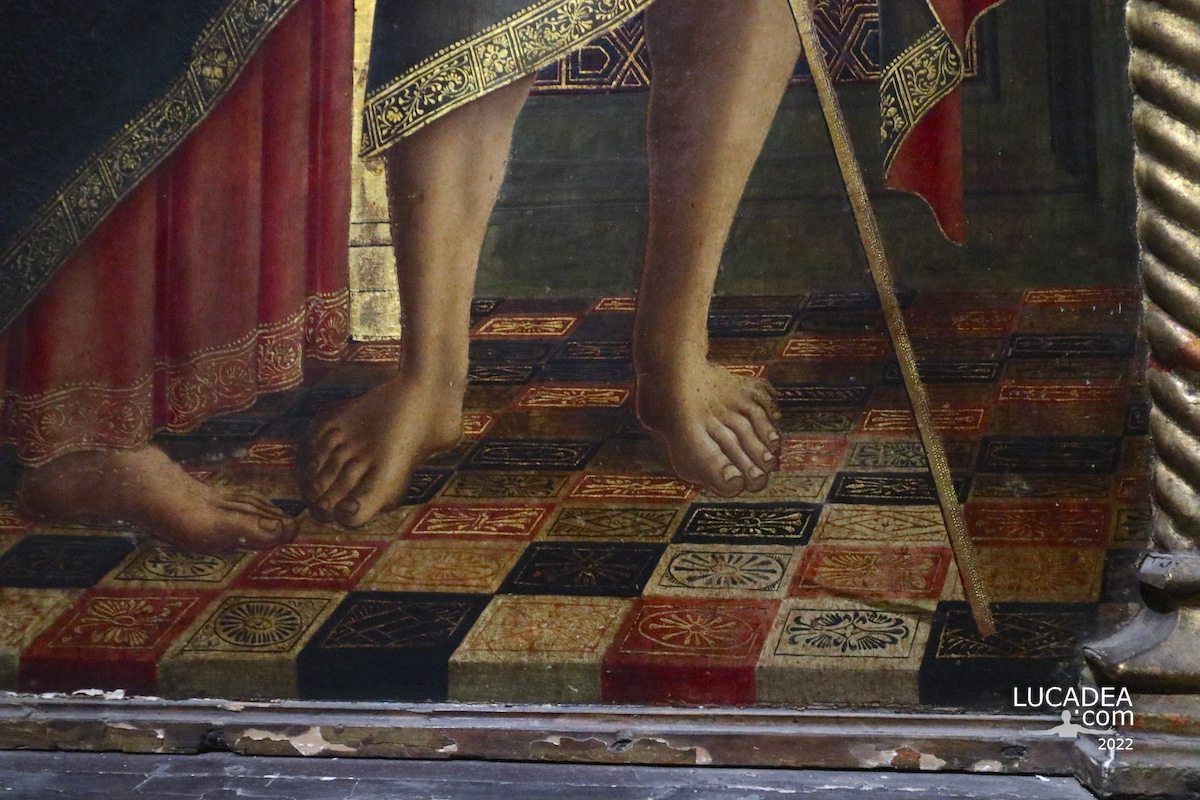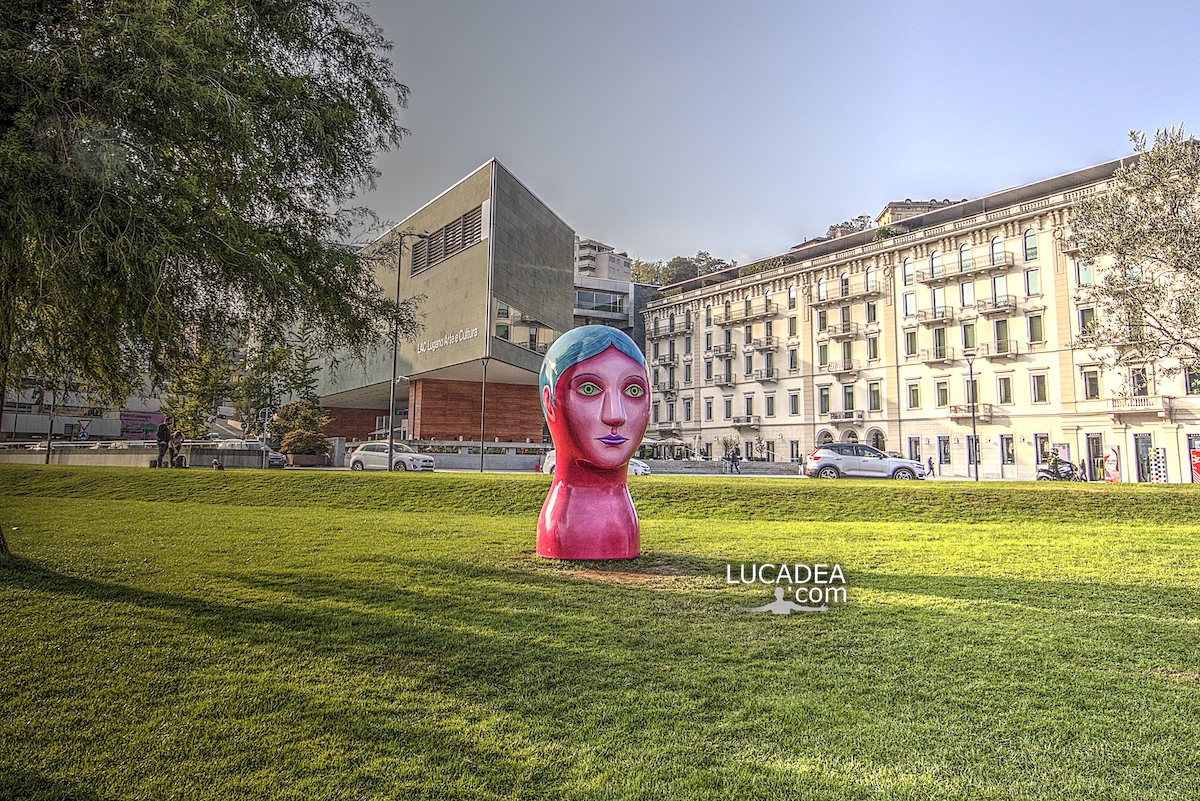Hexadactyly in a painting in Santa Maria in Castello in Genoa.
Do you know what hexadactyly is? To tell the truth, you can understand that it has something to do with six (hex) and fingers (dactyly) but I didn't know, before doing some research, that there was some mystery about it hidden in pictorial art.
The photo in this post is a detail of a painting, the Annunciation by Giovanni Mazone preserved in Santa Maria in Castello, in which one of the characters (in the left part of the left part of the polyptych depicting Saint John the Baptist and the apostle James the Greater) one of the Saints has feet with six toes.
I discovered that in art it is customary to add a finger to saintly and excellent characters (and I remember that at the time, during the visit to the church, the guide had explained it) but digging I discovered that it is not always like this and there is a sort of mystery in these depictions (here is a starting point for further study).
Do you know anything more about hexadactyly in art?
Add your own comment or go to the bottom of the site to read what other visitors have written.
Photo taken with Canon EOS M100 and lens Canon EF-S 10-18.
This is the official website of the church: santamariadicastello.it.
To see all the photos I took in Santa Maria in Castello and its cloisters, click here:

The polyptych of the Annunciation was executed in 1470 for the chapel of the same name in the church of Santa Maria di Castello in Genoa. The elaborate gilded wooden frame was executed by Mazone himself with the clear intent of reviving the elements of Gothic architecture. The compositions of the predella represent four episodes of the life of Mary: the Marriage of the Madonna and her meeting with Elizabeth; the birth of Jesus; the adoration of the Magi; the flight into Egypt and the purification of the B. V. Annunziata.
Continue and learn more on Wikipedia













